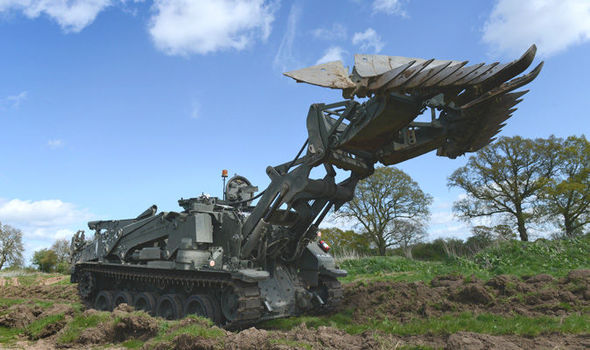- Reaction score
- 7,252
- Points
- 1,160
http://www.express.co.uk/news/uk/643624/British-Army-Terrier-tank-remote-controlled-combat-vehicle?_ga=1.220243217.866871619.1467752831

The Brits have "unmanned" their Terrier. Is there any equivalent Canadian thinking?

The Brits have "unmanned" their Terrier. Is there any equivalent Canadian thinking?
British Army's latest piece of war kit - a remote-controlled 'Swiss Army Knife' tank
IT MAY look like something from Robot Wars, but the British Army's latest armoured vehicle is built for the battlefield.
By TOM BATCHELOR
PUBLISHED: 13:00, Fri, Feb 12, 2016 | UPDATED: 17:14, Fri, Feb 12, 2016
The Terrier has been fitted with new technologies and systems by defence engineers
Described as the 'Swiss Army Knife' of the army's vehicle fleet, the UK's latest addition to its armoury can split solid concrete in two and withstand waves of up to six and a half feet.
The aptly named Terrier has been designed to meet the challenges of warfare on the battlefields of the future, with flexible tools and a telescopic investigation arm that can probe improvised explosive devices buried deep underground.
Originally launched as a conventional digger, the 32-tonne machine has been fitted with state-of-the-art technology by defence engineers to ensure it keeps a step ahead.
The combat vehicle can tear up roads or runways, stopping adversaries from using them, and can reach speeds of 45 miles an hour.
Its front loader system can lift weights of up to five tonnes and can shift 300 tonnes of earth every 60 minutes.
With camera's providing 360 degree vision using thermal and night vision, the vehicle can be remotely controlled 24 hours a day.
The telescopic investigation arm extends over 8m from the vehicle
The hammer can split rocks and penetrate concrete
Its sub-surface mine plough can also create a path free of mines and IEDs while travelling at almost 10 miles an hour.
Terrier was designed to provide the British Army with maximum flexibility from a single vehicle, allowing them to reduce their equipment and logistic footprint.
Rory Breen, of BAE Systems, which developed the vehicle, said: "The greater wading depth and surge protection will make Terrier even better suited for use in coastal or low lying areas, where it can play an important role in disaster relief as well as combat situations.
"Along with the new telescopic arm and other attachments,Terrier remains the most technologically advanced and flexible combat engineer vehicle in the world.
"Due to the modular nature of the vehicle, it could also be quickly adapted for a range of other situations, such as clearing paths through jungle or thick foliage."
